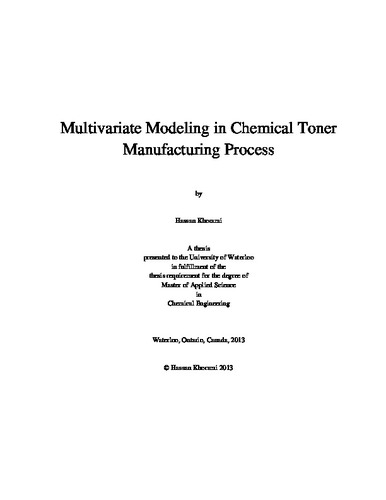| dc.description.abstract | Process control and monitoring is a common problem in high value added chemical manufacturing industries where batch processes are used to produce wide range of products on the same piece of equipment. This results in frequent adjustments on control and monitoring schemes. A chemical toner manufacturing process is representative of an industrial case which is used in this thesis. Process control and monitoring problem of batch processes have been researched, mostly through the simulation, and published in the past . However, the concept of applying the subject to chemical toner manufacturing process or to use a single indicator for multiple pieces of equipment have never been visited previously.
In the case study of this research, there are many different factors that may affect the final quality of the products including reactor batch temperature, jacket temperature, impeller speed, rate of the addition of material to the reactor, or process variable associated with the pre-weight tank. One of the challenging tasks for engineers is monitoring of these process variables and to make necessary adjustments during the progression of a batch and change controls strategy of future batches upon completion of an existing batch. Another objective of the proposed research is the establishment of the operational boundaries to monitor the process through the usage of process trajectories of the history of the past successful batches.
In this research, process measurements and product quality values of the past successful batches were collected and projected into matrix of data; and preprocessed through time alignment, centering, and scaling. Then the preprocessed data was projected into lower dimensions (latent variables) to produce latent variables and their trajectories during successful batches. Following the identification of latent variables, an empirical model was built through a 4-fold cross validation that can represent the operation of a successful batch.
The behavior of two abnormal batches, batch 517 and 629, is then compared to the model by testing its statistical properties. Once the abnormal batches were flagged, their data set were folded back to original dimension to form a localization path for the time of abnormality and process variables that contributed to the abnormality. In each case the process measurement were used to establish operational boundaries on the latent variable space. | en |

